WaterFurnace International, a leading innovator in geothermal and water source heating and cooling solutions, broke ground on a significant expansion of its Fort Wayne, Indiana headquarters on May 30th. The 173,000 square foot building expansion will more than double its current size, offering more flexibility to increase operating efficiencies and production capabilities to meet growing Read more
residential

WaterFurnace International, a leading innovator in geothermal and water source heating and cooling solutions, broke ground on a significant expansion of its Fort Wayne, Indiana headquarters on May 30th. The 173,000 square foot building expansion will more than double its current size, offering more flexibility to increase operating efficiencies and production capabilities to meet growing customer demand. It will also be equipped with multiple features that allow for future state-of-the-art enhancements as the company continues to grow.
Despite the considerable increase in space, the entire facility will continue to be 100% heated and cooled by WaterFurnace geothermal heat pumps that draw from the renewable energy of its existing pond. This commitment parallels the societal shift away from fossil fuels towards more sustainable energy solutions and underscores WaterFurnace’s dedication to environmentally friendly practices.
“This expansion reflects our commitment to innovation, sustainability, and the community. We’re investing in this 14-million-dollar project because we’re committed to growing as a renewable technology leader from right here in Fort Wayne,” said
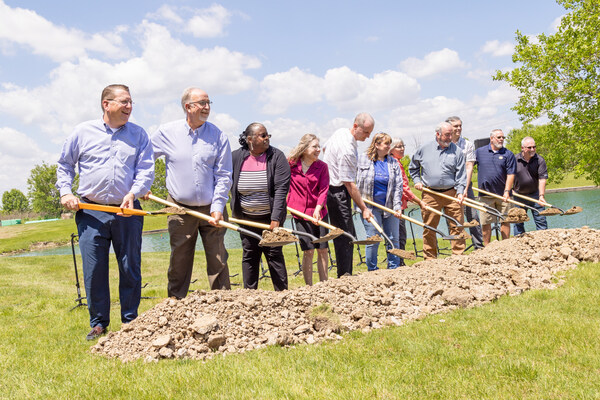
John Thomas, CEO with 30 year WaterFurnace employees (from left to right) Bob Brown, Tonsha Woods, Elaine Shearer, Curt Morton, Julie Mllage, Suzanne Cross, Tom Kinder, Chris Mann, Gregg Tapp, and Luke Goings.
CEO of WaterFurnace International, “With 320 dedicated employees, we are poised to lead the industry with our advanced products and exceptional service as the demand for sustainable energy solutions continues to rise.”
WaterFurnace’s expansion comes on the heels of two record-breaking years, driven by a growing demand for renewable energy technologies and the currently available 30% federal tax credit for geothermal systems. The company has built a reputation as an industry leader, known for its exceptional production efficiency, with unmatched lead times of just 3-5 days from order to shipment.

Manufacturing and transportation projects drive gains Total construction starts rose 6% in August to a seasonally adjusted annual rate of $1.3 trillion, according to Dodge Construction Network. Nonresidential starts rose 40% thanks to a large pickup in manufacturing and transportation buildings. Residential and nonbuilding starts fell 1% and 14%, respectively. Year-to-date through August 2023, total Read more
Manufacturing and transportation projects drive gains
Total construction starts rose 6% in August to a seasonally adjusted annual rate of $1.3 trillion, according to Dodge Construction Network. Nonresidential starts rose 40% thanks to a large pickup in manufacturing and transportation buildings. Residential and nonbuilding starts fell 1% and 14%, respectively.
Year-to-date through August 2023, total construction starts were 5% below that of 2022. Residential and nonresidential starts were down 18% and 9%, respectively; however, nonbuilding starts were up 22%. For the 12 months ending August 2023, total construction starts were unchanged. Nonbuilding starts were 20% higher, and nonresidential building starts gained 6%. Conversely, on a 12-month rolling basis, residential starts posted a 17% decline overall.
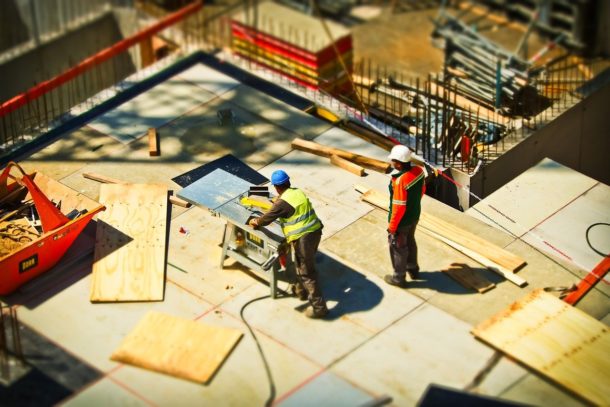
“Despite the August gain, the construction sector is running uphill,” said Richard Branch, chief economist for Dodge Construction Network. “Fear of an imminent recession seems to have abated, which should provide a boost of confidence to the sector. However, higher interest rates, labor shortages and significantly tighter lending standards will weigh down starts in the final quarter of the year. This will persist for the foreseeable future, lasting until interest rates start to move lower.”
Nonbuilding
Nonbuilding construction starts lost ground in August, falling 14% to a seasonally adjusted annual rate of $380 billion. The decline follows a strong July which saw the start of a $12 billion LNG project. Nonbuilding starts increased 12% in August when excluding the utility/gas plant category, which fell 45% during the month. Miscellaneous nonbuilding starts shot 39% higher, and highway and bridge starts gained 19%. However, environmental public works starts shed 1%.
Year-to-date through August, nonbuilding starts gained 22%. Utility/gas plants rose 40%, and miscellaneous nonbuilding starts were up 33%. Highway and bridge starts gained 13%, and environmental public works rose 17%.
For the 12 months ending August 2023, total nonbuilding starts were 20% higher than that of August 2022. Utility/gas plant and miscellaneous nonbuilding starts rose 23% and 30%, respectively. Highway and bridge starts were up 17%, and environmental public works rose 18% on a 12-month rolling sum basis.
The largest nonbuilding projects to break ground in August were the $3.5 billion TransWest Transmission Project spanning Wyoming, Colorado, Utah and Nevada, the $2.9 billion Mid-Barataria Sediment Diversion projects in Port Sulphur, Louisiana, and the $1.5 billion New England Clean Energy Connect Power Line in Maine.
Nonresidential
Nonresidential building starts gained 40% in August to a seasonally adjusted annual rate of $475 billion, largely due to a surge in manufacturing activity. Nonresidential building starts would have gained 24% when excluding these large manufacturing projects. Commercial starts rose 8% in August led by gains in parking structures and hotels, and institutional starts rose 35% with all sectors but dormitories increasing. Manufacturing starts rose 285% from July to August, fueled by two large projects. On a year-to-date basis through August, total nonresidential starts were 9% lower than that of 2022. Institutional starts gained 3%, while commercial and manufacturing starts fell 8% and 32%, respectively.
For the 12 months ending August 2023, total nonresidential building starts were 6% higher than that ending August 2022. Manufacturing starts were 2% higher. Institutional starts improved 8%, and commercial starts gained 6%.
The largest nonresidential building projects to break ground in August were the $2.5 billion John Palmour Manufacturing Center for Silicon Carbide in Siler City, North Carolina, the $2 billion VinFast electrical vehicle plant in New Hill, North Carolina, and the $1.4 billion Midfield Satellite Concourse at Los Angeles International Airport in California.
Residential
Residential building starts fell 1% in August to a seasonally adjusted annual rate of $418 billion. Single family starts gained 2%, while multifamily starts lost 5%. On a year-to-date basis through August 2023, total residential starts were down 18%. Single family starts were 21% lower, and multifamily starts were down 12%.
For the 12 months ending in August 2023, residential starts were 17% lower than in 2022. Single family starts were 23% lower, while multifamily starts were down 3% on a rolling 12-month basis.
The largest multifamily structures to break ground in August were the $530 million Hub on Campus mixed-use building in Knoxville, Tennessee, the $425 million 250 Water Street mixed-use tower in New York, New York, and the $340 million Ritz Carlton residences in North Palm Beach, Florida.
Regionally, total construction starts in August rose in the Midwest, South Atlantic and West regions, but fell in the South Central.
Watch Chief Economist Richard Branch discuss August Construction Starts here.
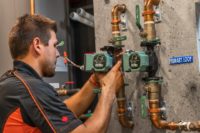
In our continuing Industry Forecast series, we talk with John Hazen White, Jr. – Executive Chairman & Owner of Taco Comfort Solutions, on topics such as the short-term economy, supply chain issues, and lessons learned over the course of the pandemic. Here is our exclusive Q & A with John Hazen White, Jr.: Read more
 In our continuing Industry Forecast series, we talk with John Hazen White, Jr. – Executive Chairman & Owner of Taco Comfort Solutions, on topics such as the short-term economy, supply chain issues, and lessons learned over the course of the pandemic. Here is our exclusive Q & A with John Hazen White, Jr.:
In our continuing Industry Forecast series, we talk with John Hazen White, Jr. – Executive Chairman & Owner of Taco Comfort Solutions, on topics such as the short-term economy, supply chain issues, and lessons learned over the course of the pandemic. Here is our exclusive Q & A with John Hazen White, Jr.:
MH: We’ve all experienced supply chain shortages, whether it’s industry related or things such as computer chips, plastics, bacon, etc., for example. Do you project a turnaround soon or within the next 6-12 months for certain materials that relate to your specific company?
JHW: Due to the China’s current COVID lockdowns and further supply chain disruptions caused by the war in Ukraine, we believe that chain issues are going to get worse over the next several months. Much of the processing of base raw materials and secondary materials has been shut down, further straining the supply chain. Exacerbating these issues, the skyrocketing costs of fuel and transportation are going to make the delivery of goods more costly.
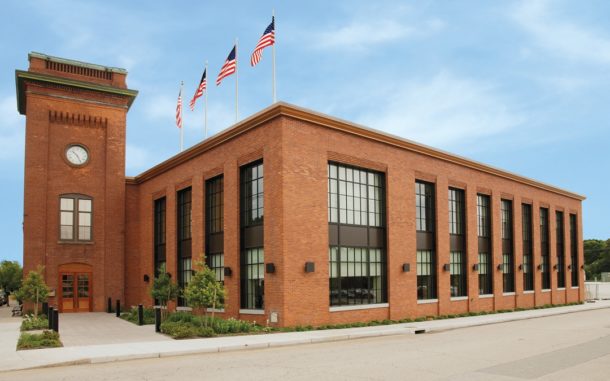
MH: We are in the midst of some of the highest inflation rates since the early ‘80s. Do you think that higher inflation becomes a “newer normal”? Explain.
JHW: Eventually costs will temper demand and inflation will slow. Unfortunately, this will be accompanied by an economic downturn. The risk is that governments may try to artificially stimulate the economy, which could potentially prolong the inflationary upturn.
MH: In general, how do you see the economy short-term? Give a few examples of how you draw that conclusion (housing starts, commercial construction, etc.).
JHW: The short-term economy appears to be healthy. Orders remain strong and backlogs are at all-time highs. Data such as housing starts point to continued growth in 2022, with low inventory levels and a tight rental market driving that growth. In addition, manufacturing construction is on the rise to meet capacity demands.
MH: Where are you seeing signs of positivity, if any?
JHW: Short-term, the economy appears to still be growing, but at a slower pace. Although the last two years have been very challenging, these challenges can also serve as a catalyst for improvement. Companies are reinventing their structures and processes to adapt to a much faster business pace. We’re seeing step changes in productivity, efficiency, and innovation to keep up with today’s challenges and changing business environment.
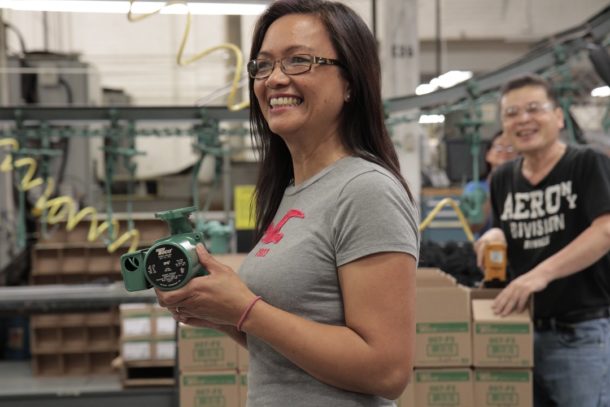
MH: How do you as manufacturers work with customers who are dealing with longer lead times and/or higher prices? Is it a matter of open lines of communication?
JHW: Constant communication and strong partnerships are great ways to manage through the current supply chain and production issues. Most customers understand the challenges that all manufacturers are currently dealing with – they just want to be kept informed to minimize surprises and plan their projects accordingly.
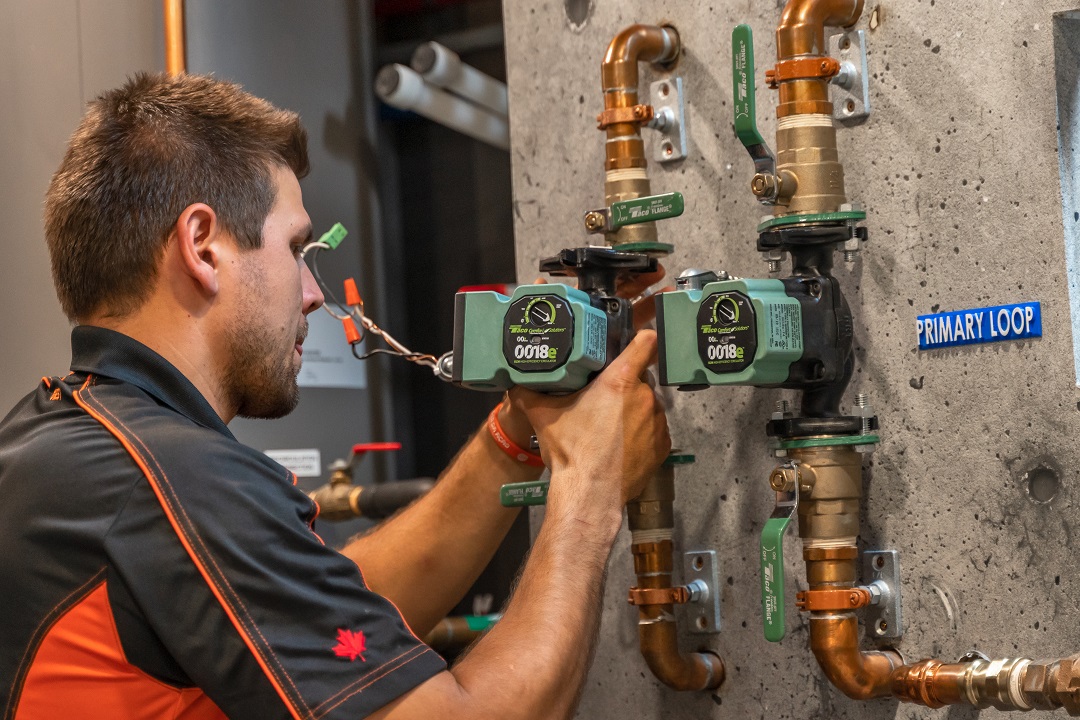
MH: It seems that in today’s employment landscape, it’s hard to find good labor, whether it’s truck drivers, waiters at restaurants, etc. In our industry, how do we continue the fight to highlight the trades as a great career choice?
JHW: Social media is a great way to reach future tradesman of our industry. We have been running a social media campaign called #TradePower, which highlights successful contractors in the industry and the pride they take in their craftsmanship and service. Above all else, Taco has benefited by continuing to do what we always do – treat people right.
 MH: In spite of COVID, people must move on. How has your company evolved—or continued to march forward—over the past two years, and talk about any new initiatives, expansions, etc.
MH: In spite of COVID, people must move on. How has your company evolved—or continued to march forward—over the past two years, and talk about any new initiatives, expansions, etc.
JHW: The sudden disruption of COVID restrictions in 2020 forced a much faster adoption of planned technology upgrades. A planned rollout of organizational digitization was condensed from 18 month to two weeks, which gave us the ability to continue functioning and growing in the new work-from-home reality. One of the biggest positives we saw during the pandemic was the rise of global collaboration. The quick adoption of virtual meetings boosted our collaboration with our entire global workforce, ensuring the best players were part of any team meeting. This has led to an increased sharing of ideas on everything from safety protocols to operational improvements. More than ever, we are thinking globally to optimize our resources and maximize our growth.
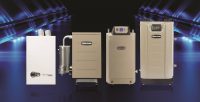
Offers Help Homeowners, Commercial Businesses Save Money on High-Efficiency Boiler Purchases Growing awareness of the benefits of energy efficiency and increasing performance standards for heating systems are important drivers in the boiler market. Focused on these trends, Weil-McLain, a leader in hydronic heating systems, recently launched EcoRebates industry-leading rebate tools on its website. The tools Read more
Offers Help Homeowners, Commercial Businesses Save Money on High-Efficiency Boiler Purchases
Growing awareness of the benefits of energy efficiency and increasing performance standards for heating systems are important drivers in the boiler market. Focused on these trends, Weil-McLain, a leader in hydronic heating systems, recently launched EcoRebates industry-leading rebate tools on its website. The tools automatically highlight rebate and incentive savings available to homeowners and commercial entities based on their location when they research and view qualified energy-efficient boiler equipment.
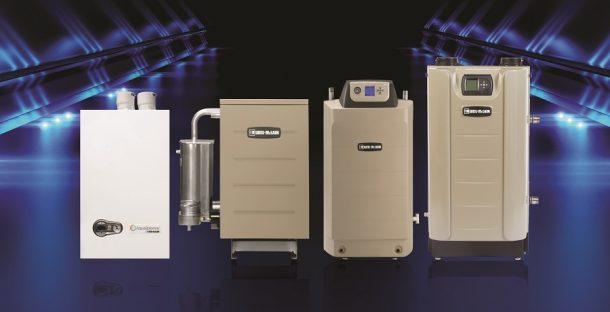
EcoRebates tracks thousands of rebate programs offered by utilities and energy service providers that offer cash-back to homeowners and commercial entities that purchase energy efficient hydronic heating equipment. Using the rebate tools on the Weil-McLain site, homeowners can easily find rebate savings, up to $2,500 in some areas, with higher savings available to commercial entities purchasing larger equipment.
“The rebate center is a powerful tool that is simple for homeowners and business owners to use and automatically displays location-based rebates and savings on energy efficient products in real-time,” said Scott Butterfield, VP of Marketing and Business Development at Weil-McLain. “We are excited to offer this solution to our sales team and dealers to provide a valuable way to present savings to customers throughout their high efficiency boiler purchase journey.
“Weil-McLain is the North American leading boiler manufacturer who remains strong in the high-efficiency boiler market,” added Brett Battles, Co-Founder and CEO at EcoRebates. “We’re pleased to work with them to deliver these valuable savings opportunities into the hands of their customers.”
More information on rebates for Weil-McLain residential and commercial boiler systems is available at www.weil-mclain.com/rebate-center.
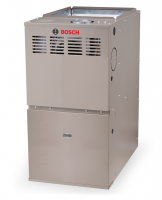
Bosch Thermotechnology introduces its first-ever non-condensing gas furnace, rounding out the company’s product portfolio with a complete residential system for heating and cooling. The Bosch 80% AFUE Gas Furnace, BGS80 Series offers a compact size and four-way multipoise design, making it an ideal replacement for aging non-condensing furnaces. With a cabinet height of 33.75 inches and a Read more
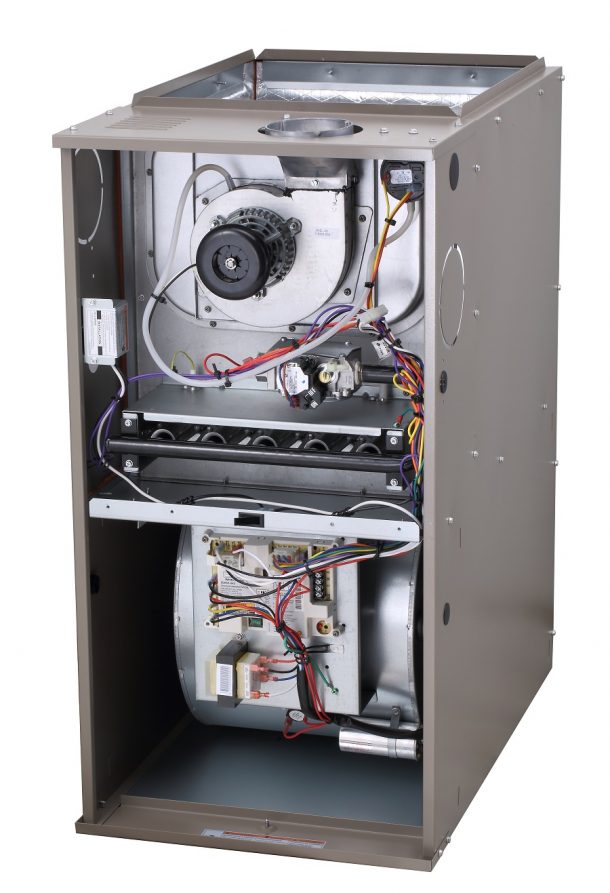 Bosch Thermotechnology introduces its first-ever non-condensing gas furnace, rounding out the company’s product portfolio with a complete residential system for heating and cooling. The Bosch 80% AFUE Gas Furnace, BGS80 Series offers a compact size and four-way multipoise design, making it an ideal replacement for aging non-condensing furnaces.
Bosch Thermotechnology introduces its first-ever non-condensing gas furnace, rounding out the company’s product portfolio with a complete residential system for heating and cooling. The Bosch 80% AFUE Gas Furnace, BGS80 Series offers a compact size and four-way multipoise design, making it an ideal replacement for aging non-condensing furnaces.
With a cabinet height of 33.75 inches and a multipoise design, the Bosch furnace can fit into tight places, including basements, attics and crawl spaces, allowing for easy integration into homes. The unit’s control board is equipped with LED Fault Codes, which display common errors as combinations of LED “flashes,” making it easy for contractors to quickly diagnose, troubleshoot and service units.
Features include:
- Compact Size – Cabinet height of 33.75 inches allows for easy integration in tight places
- Energy Efficient – Converts up to 80 percent of the fuel purchased to heat a home
- Complete System – Integrate Bosch BGS80 Furnace with its IDS Outdoor Units and Cased Coils
- Quick Diagnostics – LED Fault Codes displays common errors as combination of LED “flashes”
“Bosch continuously seeks ways to enhance our product portfolio,” said Goncalo Costa, director of air conditioning regional business unit, North America at Bosch Thermotechnology. “Our customers have been asking for Bosch to design a non-condensing gas furnace for their homes, and contractors wanted to be able to offer them one. This new offering fills those gaps, and represents another step in Bosch’s product portfolio journey.”
 The furnace offers numerous installation conveniences for contractors. All units come standard with a natural gas-to-LP conversion kit, making the unit field configurable. The design features a left- or right-hand connection for gas and electric service, and the furnace comes equipped with a removable bottom closure panel for bottom return applications and knockout holes to aid in left/right return applications.
The furnace offers numerous installation conveniences for contractors. All units come standard with a natural gas-to-LP conversion kit, making the unit field configurable. The design features a left- or right-hand connection for gas and electric service, and the furnace comes equipped with a removable bottom closure panel for bottom return applications and knockout holes to aid in left/right return applications.
Consumer benefits include lower energy bills, as the furnace converts up to 80 percent of the fuel purchased to heat a home, and peace of mind, with a 20-year limited warranty on the heat exchanger and a 5-year* limited warranty on parts. Pairing the furnace with Bosch IDS Outdoor Units** and Cased Coils** allows the heating and cooling system to switch between fuel sources, keeping homeowners comfortable in any temperature and saving money.
*10-year limited parts warranty, if product is registered within 60 days of installation, see boschheatingandcooling.com for full limited warranty details.
**IDS Outdoor Units (BOVA Models) and Cased Coils (BMAC Models)
